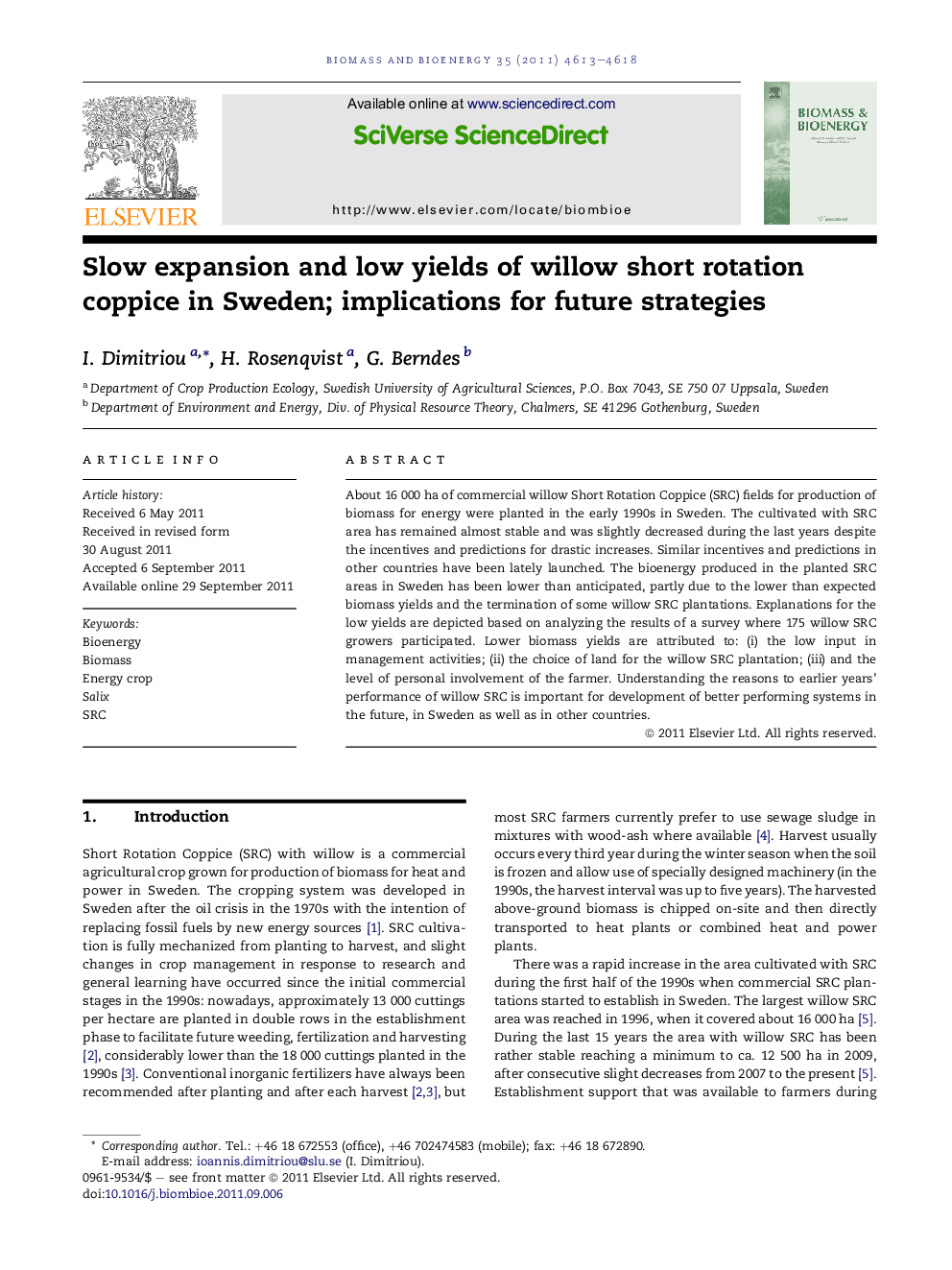| Article ID | Journal | Published Year | Pages | File Type |
|---|---|---|---|---|
| 677797 | Biomass and Bioenergy | 2011 | 6 Pages |
About 16 000 ha of commercial willow Short Rotation Coppice (SRC) fields for production of biomass for energy were planted in the early 1990s in Sweden. The cultivated with SRC area has remained almost stable and was slightly decreased during the last years despite the incentives and predictions for drastic increases. Similar incentives and predictions in other countries have been lately launched. The bioenergy produced in the planted SRC areas in Sweden has been lower than anticipated, partly due to the lower than expected biomass yields and the termination of some willow SRC plantations. Explanations for the low yields are depicted based on analyzing the results of a survey where 175 willow SRC growers participated. Lower biomass yields are attributed to: (i) the low input in management activities; (ii) the choice of land for the willow SRC plantation; (iii) and the level of personal involvement of the farmer. Understanding the reasons to earlier years’ performance of willow SRC is important for development of better performing systems in the future, in Sweden as well as in other countries.
► Lower than projected biomass yield levels on Swedish willow SRC plantations during the 1990s has occurred. ► This is attributed to: selection of marginal lands; inadequate management activities; little engagement of farmers. ► Consequently, low interest from other farmers and willow SRC areas at low level in Sweden has occurred. ► Policymakers in other European countries should develop structures for expert advice services to avoid similar developments. ► These structures must be oriented to support farmers in their management to achieve high yields.
